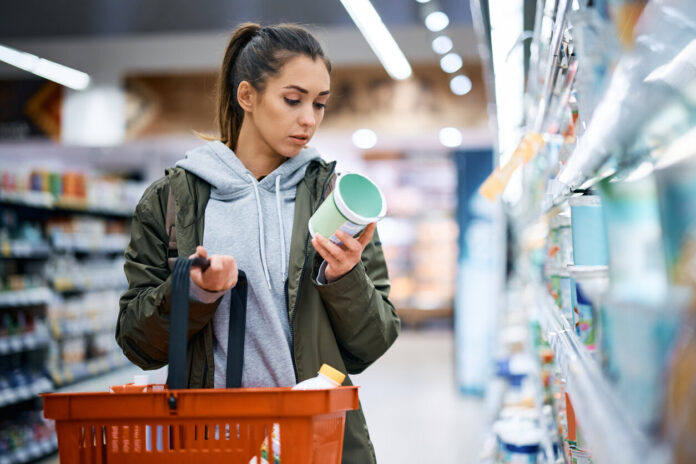On June 12, 2023, the consumer association UFC-Que Choisir updated its “QuelProduit” application. Among the new features, we find the addition of a new logo available on supermarket shelves: the Planet-Score. More than 135,000 food products now have this label. But what does it bring more than the Nutri-score?
The Nutri-score, having recently entered the dictionary, is now present on the packaging of many foodstuffs in supermarkets. The latter corresponds to a five-level nutrition labeling system ranging from “A” to “E”. It is established according to the nutritional value of the products. Nevertheless, if this label makes it possible to direct the consumer and to inform him of the good composition of a food, the latter does not take into account its environmental impact.
To compensate for the lack of information concerning the environmental impact of the consumption of food products, the Institute of Organic Agriculture and Food (ITAB) has therefore created the Planet-score. This independent index is supported by UFC-Que Choisir and several environmental defense associations such as Générations Futures. Thus, the latter takes into account in its rating the impact on health, but also on the climate.
But the development of this new logo is not new. Indeed, “since 2021, alongside fifteen other NGOs and organic players, UFC-Que Choisir has been promoting the Planet-Score as an indicator of the environmental impact of food products”, specifies UFC-Que Choisir. In 2021, twenty-seven manufacturers and eight brands tested this new label. “In addition, more than 30 brands now display it on their packaging, in France, Spain and Germany”, adds the association. But what is the methodology used for this index? Will it take the place of the nutri-score?
The “Planet-score” labeling therefore makes it possible to report on the environmental impact based on the composition of food products. The latter considers in particular the “effects of agricultural and food production on living things (biodiversity and health damage due in particular to pesticides, deforestation, etc.),” specifies UFC-Que Choisir. Like the Nutri-score, this logo grades foods from “A”, corresponding to the best score, to “E”, for bad students.
“In this period when inflation makes organic even less accessible to low-income households, it may be useful to use certain conventional agricultural products which limit their environmental and health impact”, informs UFC-Que Choisir. For the moment optional, the association would like this labeling to become a reference. However, another device risks overshadowing it.
The climate and resilience law of 2021 imposes the experimentation of an environmental display making it possible to inform the consumer of “the environmental impact of the goods and services considered over their entire life cycle”, specifies the site of the ministry of Economy. It must take into account greenhouse gas emissions, damage to biodiversity and consumption of water and other natural resources. The Environment and Energy Management Agency (Ademe) is responsible for implementing this new government logo. But the latter is debated.
Last March, Ademe told AFP that the tests will take place until the summer, “with the aim of stabilizing and validating the work before the end of the year”, as relayed by the Huffingtonpost. But UFC-Que Choisir expressed some concerns about this logo. Indeed, that of Ademe would be based on the analysis of the life cycle (ACV). However, this method “essentially measures the intensity of a production, and therefore leads to absurd ratings of the environmental impact of food, as evidenced by the fact that it rates organic production systematically worse than food from the intensive agriculture yet produced with great reinforcements of chemical fertilizers and pesticides”, affirms the association.
The UFC-Que Choisir then insists on the need to consider the Planet-score, now available in most brands, rather than that of Ademe which would be based on a biased calculation method.















